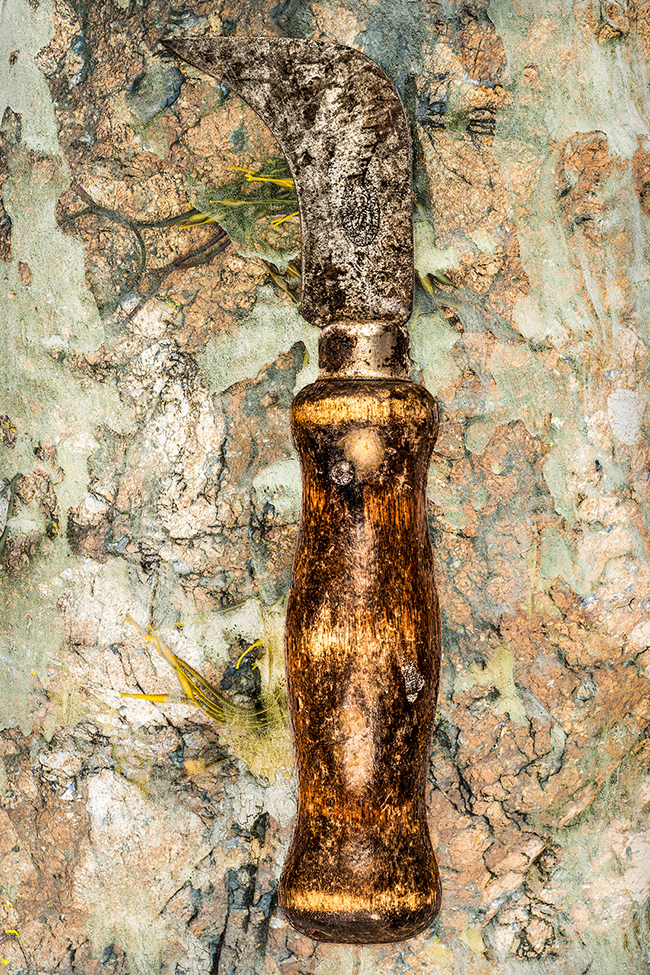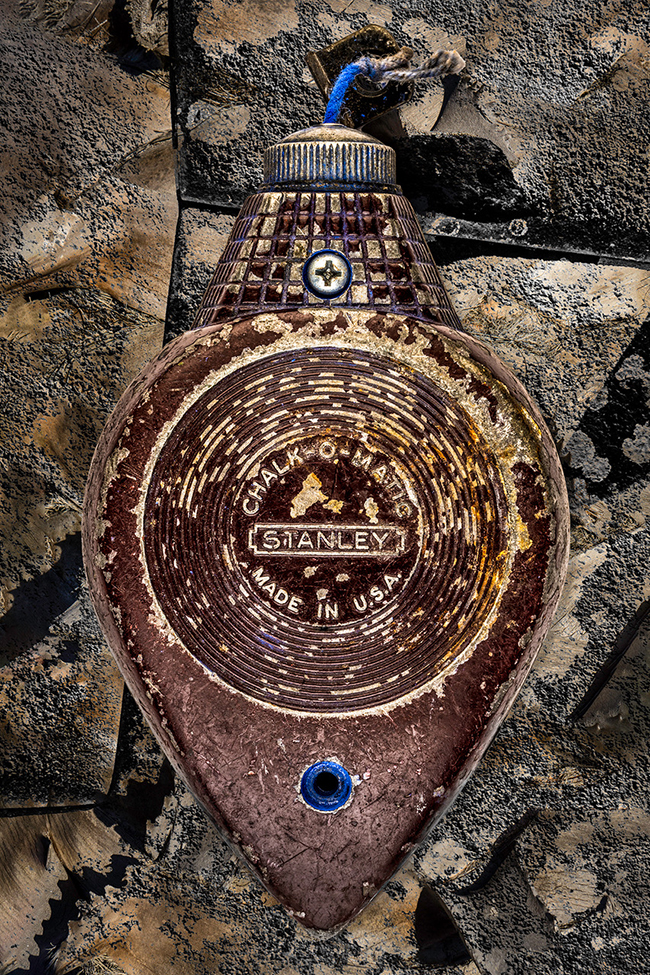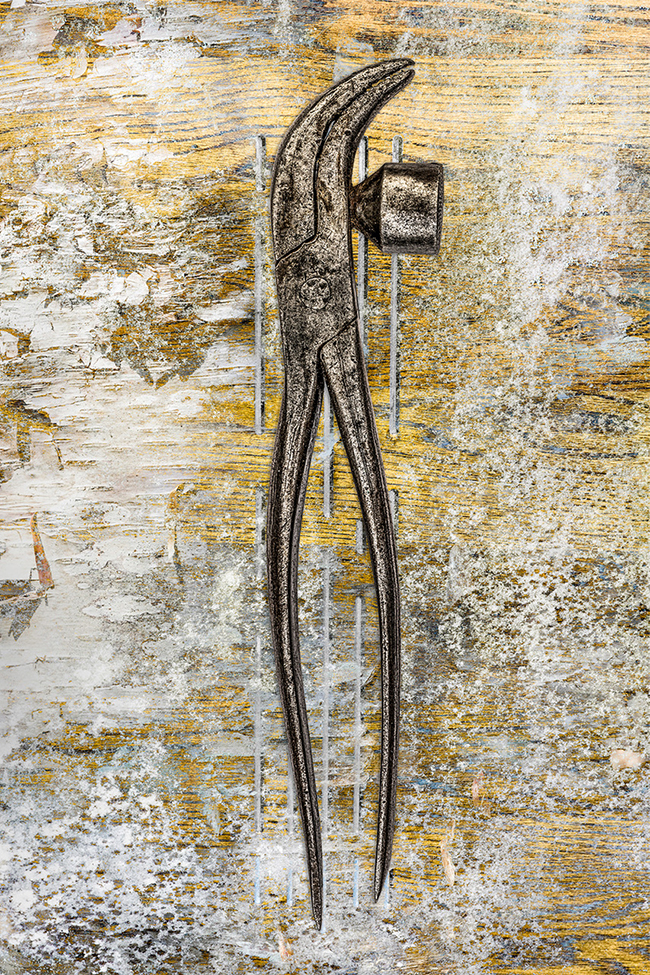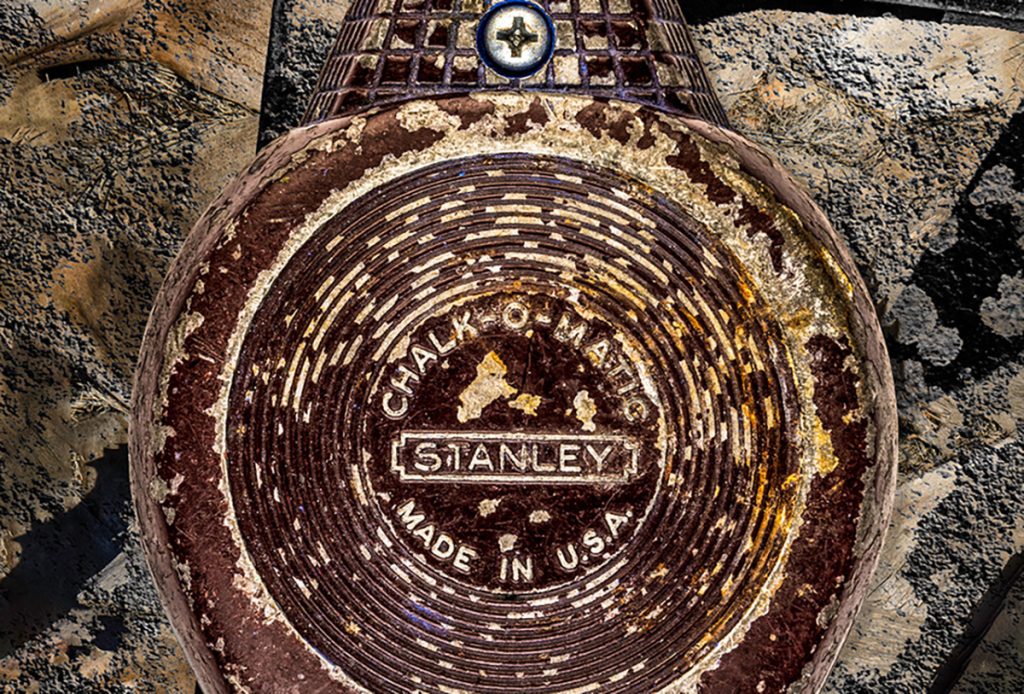Bernard C. Meyers is an American abstract contemporary artist and master printer whose work stands at the crossroads of photographic realism and abstract expressionism. With an MFA from the Rochester Institute of Technology, he brings the discipline of printmaking together with a modern eye for abstraction. Meyers is known for building bridges between two worlds that are often kept apart: the precise detail of photographic surfaces and the restless energy of expressionist gesture. His practice is grounded in process, craft, and an urge to make old forms speak in new ways. By exploring textures, contrasts, and the tension between clarity and suggestion, Meyers has carved out a place in contemporary art where observation and imagination merge. His work doesn’t lean fully toward illusion, nor does it abandon structure for chaos; instead, it navigates the shifting terrain between the two, where memory, history, and material presence coexist.

Breathing Life into Forgotten Tools
Meyers’ recent body of work turns its attention to objects many would overlook—hand tools, instruments, and devices that once lived at the center of someone’s daily practice but now lie forgotten in drawers, boxes, and workshops. To him, these are not just curiosities; they are fragments of lives once lived, bearing the touch of hands and the weight of labor.
He speaks of how neighbors, friends, and family join him in this search, bringing him forgotten wrenches, rusted chisels, and devices whose purpose has long since been eclipsed by new technologies. What he sees is not uselessness but beauty. Each piece holds a story. The worn edges, the dents, the patina left behind from use—these become evidence of human endeavor.

Rather than restoring these objects, Meyers places them into a dialogue with his own painterly surfaces. Against backgrounds thick with impasto, layered with harmonic color and delicate veils of texture, the tools take on new identities. They are no longer only functional objects but participants in a visual conversation. The contrast is deliberate: the hard metal and wood set against gossamer fields of paint. The weight of utility meets the openness of abstraction.
This act of repurposing gives the tools a second life. Where once they hammered, cut, or measured, now they act as witnesses, carriers of meaning in a world where craft and industry are often replaced by speed and disposability. For Meyers, the process is less about nostalgia and more about recognition. He doesn’t pretend to return the objects to their former status; instead, he acknowledges their obsolescence and reimagines them as artworks.
The backgrounds against which these tools are set matter as much as the objects themselves. Meyers layers pigment with an eye for harmony, seeking relationships between tone and texture that echo the intent of the tools. He does not simply mount them on plain grounds but creates atmospheres, painterly fields that suggest both space and emotion. The impasto invites touch, its physicality a counterpart to the worn surfaces of the tools. The gossamer veils of color soften the weight of the objects, reminding us of their fragility as artifacts of human labor.

There is a meditative quality in this work. It reminds viewers that tools are not only instruments of production but symbols of the passage of time. They link us to vocations once common—craftspeople, builders, artisans—whose expertise is often undervalued in today’s culture. By giving these objects space on the canvas, Meyers asks us to see them not as clutter but as testaments to skill, perseverance, and ingenuity.
The joy he finds in this process is contagious. He describes it as a kind of treasure hunt, where each discovery holds potential. It is not just his project but a communal one, since neighbors and family contribute to the search. This shared participation broadens the scope of the work: each tool carries not just an anonymous history but a personal story of where it was found, who gave it, and what it once meant.
Meyers’ work stands at the intersection of memory and renewal. He honors the material reality of tools while shifting their role from utility to reflection. In doing so, he bridges his longstanding interest in printmaking, texture, and abstraction with a deeply human concern for connection and continuity. The artworks ask us to pause, to look again at the overlooked, and to recognize that beauty can be found not only in newness but also in the wear of time.

